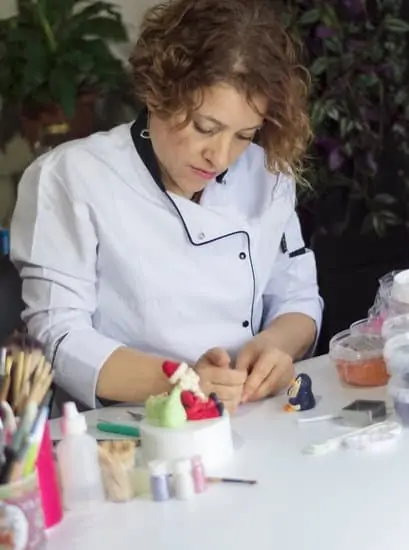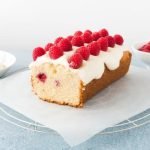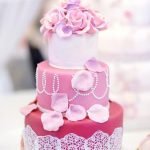Are you interested in learning the art of cake decorating? If so, you’ve come to the right place. In this comprehensive guide, we will explore the world of cake decorating and its importance in creating visually stunning and delicious cakes.
Whether you’re a beginner or have some experience, this article will provide step-by-step instructions on essential tools and equipment, basic techniques, working with fondant, advanced decorating techniques, and troubleshooting common cake decorating problems. By the end of this article, you’ll be equipped with all the knowledge you need to create beautiful and delectable cakes through the art of cake decorating.
Cake decorating is not just about making a cake look pretty; it’s also about enhancing the flavor and overall appeal of the dessert. A beautifully decorated cake can become the centerpiece of any celebration and leave a lasting impression on guests.
From simple designs to intricate masterpieces, there’s no limit to what you can achieve with the right skills and techniques. So, let’s dive into the world of cake decorating and discover how you can elevate your baking game.
Throughout this article, we will cover everything from basic techniques such as smoothing icing and creating borders to more advanced skills like sculpting, painting, and airbrushing for elaborate designs. Additionally, we’ll address common issues that may arise during the decorating process and provide tips on how to troubleshoot and fix them. So grab your piping bags, turntables, and fondant – it’s time to embark on an exciting journey into the art of cake decorating.
Essential Tools and Equipment
When it comes to cake decorating, having the right tools and equipment is essential for creating beautiful and professional-looking designs. From piping bags to turntables, here is a comprehensive guide to the essential tools and equipment needed for cake decorating.
Piping Bags and Tips
Piping bags are a must-have tool for cake decorating, allowing you to effortlessly pipe icing onto cakes in various designs. When choosing piping bags, consider whether you prefer disposable or reusable options. Additionally, investing in a variety of piping tips will give you the flexibility to create different textures and patterns, from intricate flowers to simple borders.
Turntables
A turntable is another indispensable tool for cake decorating, as it allows you to smoothly rotate the cake while applying icing or fondant. This ensures even coverage and makes it easier to create smooth finishes and intricate designs. Look for a durable turntable with a non-slip base for stability while working.
Spatulas and Smoothers
Spatulas and smoothers are essential for achieving a professional finish on your decorated cakes. Offset spatulas are perfect for spreading icing evenly, while smoothers help create a flawless surface on both buttercream and fondant-covered cakes.
Overall, having the right tools and equipment is crucial when learning how to learn cake decorating. By investing in quality supplies such as piping bags, tips, turntables, spatulas, smoothers, and more, you can enhance your skills and create stunning designs with ease.
Basic Techniques
Smoothing Icing
One of the first steps in cake decorating is learning how to properly smooth icing onto a cake. Start by applying a crumb coat-a thin layer of icing that seals in crumbs-and allow it to set before adding the final layer of icing. Use a bench scraper or offset spatula to evenly spread and smooth the icing around the sides and top of the cake, ensuring a clean and polished finish.
Creating Borders
Borders add a decorative touch to cakes and can be created using various techniques such as piped shells, beads, or zigzags. To create borders, fill a piping bag fitted with a small round tip with icing and practice piping along the edges of a practice board or parchment paper until you feel comfortable enough to do so on a cake.
Piping Simple Designs
Piping simple designs onto cakes allows for creativity and personalization. With the right piping tips and steady hand, you can create flowers, leaves, stars, or even written messages on your cakes. Practice different pressure levels and tip movements on a practice surface before moving on to decorate your actual cake.
Learning these basic techniques is crucial for anyone wanting to master cake decorating. By mastering these foundational skills, aspiring cake decorators will build confidence in their abilities as they move on to more advanced techniques.
Choosing the Right Cake
When it comes to cake decorating, choosing the right cake is essential for achieving the best results. The first consideration when selecting a cake for decorating is the flavor. It’s important to choose a flavor that complements the design you have in mind.
For example, if you are planning to use fresh fruits or floral decorations, a light and fruity flavor like lemon or strawberry would be a great choice. On the other hand, if you are planning to create a rich and decadent design, a chocolate or red velvet cake would be more suitable.
Texture is another important factor to consider when choosing a cake for decorating. A dense and sturdy cake will hold up better under the weight of fondant and intricate designs compared to a light and fluffy cake. For example, a pound cake or a mud cake would be ideal for sculpting and carving into elaborate shapes, while a chiffon or sponge cake may not hold its shape as well.
Size is also an important consideration when choosing a cake for decorating. The size of the cake should be proportionate to the design you have in mind. For elaborate designs with multiple tiers and intricate details, a larger cake would be necessary, while for simple designs or single-tiered cakes, a smaller size would suffice.
In summary, when it comes to learning how to learn cake decorating, selecting the perfect cake is crucial for success. Considering factors such as flavor, texture, and size will ensure that your chosen cake is suitable for your desired design and will provide the best canvas for your creative ideas.
| Consideration | Example |
|---|---|
| Flavor | Lemon or Strawberry for fresh fruit/floral decorations; Chocolate or Red Velvet for rich designs |
| Texture | Dense/Sturdy cakes like pound or mud cakes for sculpting; Light/Fluffy cakes like chiffon/sponge may not hold shape as well |
| Size | Proportionate to design – larger cakes for elaborate designs; smaller sizes for simple/single-tiered cakes |
Working With Fondant
Learning to work with fondant is an essential skill for anyone interested in cake decorating. Fondant adds a smooth and professional finish to cakes, making it a popular choice for creating visually stunning designs. In this section, we will provide a detailed tutorial on working with fondant, including tips for rolling, shaping, and covering cakes.
When learning how to work with fondant, it’s important to start with the right tools and equipment. You will need a smooth work surface, a rolling pin, cornstarch or powdered sugar for dusting, and a sharp knife or pizza cutter for trimming. It’s also helpful to have a fondant smoother and various shaping tools to help create intricate designs.
To begin working with fondant, make sure your cake is properly prepared with a layer of buttercream icing to help the fondant adhere. Next, knead the fondant until it becomes soft and pliable. Roll out the fondant on your work surface using the rolling pin and gently drape it over the cake. Smooth out any air bubbles or wrinkles using your hands or a fondant smoother.
Once the cake is covered in fondant, you can then start shaping and decorating using additional pieces of fondant. From simple cut-out shapes to intricate sculpted designs, there are endless possibilities for creating beautiful decorations with fondant. With practice and experimentation, you can master the art of working with fondant to take your cake decorating skills to the next level.
The key to mastering fondant work is patience and practice. Don’t be discouraged if your first attempts don’t turn out perfectly – keep experimenting and refining your techniques. There are plenty of resources available such as online tutorials, books, and classes that can provide further guidance on how to learn cake decorating with fondant and inspire new ideas for creating stunning cake designs using this versatile medium.
Advanced Decorating Techniques
Once you have mastered the basic techniques of cake decorating, you may want to explore more advanced methods to take your skills to the next level. Sculpting, painting, and airbrushing are just a few examples of advanced decorating techniques that can elevate your cake designs and create truly stunning works of edible art.
Sculpting allows you to shape and mold fondant or gum paste into intricate three-dimensional designs, such as flowers, figurines, or other decorative elements. With a little practice and patience, you can create lifelike sculpted decorations that will impress any cake recipient.
Painting on cakes is another advanced technique that adds a new dimension to your decorating repertoire. Edible food colors can be used to hand-paint designs, patterns, or even full scenes directly onto a cake’s surface. This method allows for endless creativity and personalization in your cake decorating projects.
Airbrushing is a popular method for achieving smooth gradients of color and adding depth and dimension to your cake designs. Airbrushes can be used with food-safe colors to create stunning effects such as ombre shading, realistic textures, or even intricate stenciled patterns on cakes.
These advanced decorating techniques require time, practice, and dedication in order to master them effectively. However, with the right guidance and resources, you can learn how to use these methods to create showstopping cakes that will leave a lasting impression.
| Advanced Technique | Description |
|---|---|
| Sculpting | Allows for shaping fondant or gum paste into three-dimensional designs like flowers or figurines |
| Painting | Using edible food colors to hand-paint designs or scenes on the cake’s surface |
| Airbrushing | Creating smooth gradients of color and adding depth using food-safe colors with an airbrush |
Troubleshooting Common Cake Decorating Problems
Learning how to decorate cakes may come with its fair share of challenges. However, with the right guidance and knowledge, it’s possible to troubleshoot and fix common decorating mishaps. Here are some common issues and solutions to help you navigate through the world of cake decorating:
- Inconsistent Icing: One of the most common problems in cake decorating is dealing with icing that is too runny or too stiff. To fix this issue, start by adjusting the consistency of the icing by adding more powdered sugar for a thicker consistency or a small amount of milk for a runnier texture. It’s important to gradually make these adjustments while mixing until the desired consistency is achieved.
- Fondant Cracking: Working with fondant can be challenging, especially when dealing with cracking or dry fondant. To avoid this issue, make sure to knead your fondant thoroughly before rolling it out onto the cake. If cracks appear while covering the cake, gently smooth them out with a fondant smoother or a small amount of vegetable shortening to blend and soften the surface.
- Color Bleeding: Another common problem when using colored icing or fondant is color bleeding, where colors start to blend together and create a messy appearance. To prevent color bleeding, allow each layer of icing or fondant to dry completely before adding another layer on top. This will help maintain clean and distinct lines between different colors.
By understanding these troubleshooting techniques, you’ll be better equipped to address and resolve any issues that may arise during your cake decorating journey. Don’t get discouraged by these challenges; instead, use them as opportunities to learn and improve your skills in creating beautiful and delicious works of edible art.
Remember that practice makes perfect when it comes to mastering cake decorating techniques. Reach out to experienced decorators for advice, watch tutorials, attend workshops and showcase your creations to gain constructive feedback – all of which can enhance your abilities. With patience and persistence, you’ll develop confidence in handling any decoration-related issues that come your way.
Practice Makes Perfect
As with any skill, the key to mastering cake decorating is through practice and experimentation. Don’t be discouraged if your first few attempts don’t turn out as perfectly as you hoped. Remember that even professional cake decorators started out as beginners and had to put in the time and effort to hone their craft.
Set aside time each week to work on a new technique or try out a different design. With persistence and dedication, you’ll see improvement and progress in no time.
In addition to practice, seeking out further learning and inspiration can also greatly enhance your cake decorating skills. There are countless resources available for those looking to delve deeper into the world of cake decorating, from online tutorials and courses to books and workshops. Take advantage of these opportunities to learn new techniques, explore different styles, and gain valuable insights from experienced decorators.
Remember that creativity is key when it comes to cake decorating. Don’t be afraid to experiment with new ideas, colors, and designs. Embrace your own unique vision and style, and let it shine through in your creations. The more you explore and push the boundaries of traditional cake decorating, the more you’ll develop a distinctive voice as a decorator. So keep practicing, keep learning, and most importantly, have fun with it.
Frequently Asked Questions
Can I Teach Myself to Decorate Cakes?
Yes, you can teach yourself to decorate cakes. With the abundance of online tutorials, books, and resources available, it’s entirely possible to learn and improve your cake decorating skills through self-study.
How Do You Learn to Be a Cake Decorator?
There are several ways to learn cake decorating. You can attend classes or workshops at a culinary school or community center, work under an experienced cake decorator as an apprentice, watch online tutorials, and practice consistently.
What Does a Beginner Need for Cake Decorating?
For beginners in cake decorating, some essential tools and supplies include a set of basic piping tips, piping bags, offset spatula, turntable, cake leveler, fondant smoother, and a good quality stand mixer. Additionally, having a range of food coloring gels and different types of sprinkles and edible decorations is helpful for creativity.

Welcome to our cake decorating blog! My name is Destiny Flores, and I am the proud owner of a cake decorating business named Cake Karma. Our mission is to provide delicious, beautiful cakes for all occasions. We specialize in creating custom cakes that are tailored specifically to each customer’s individual needs and tastes.





